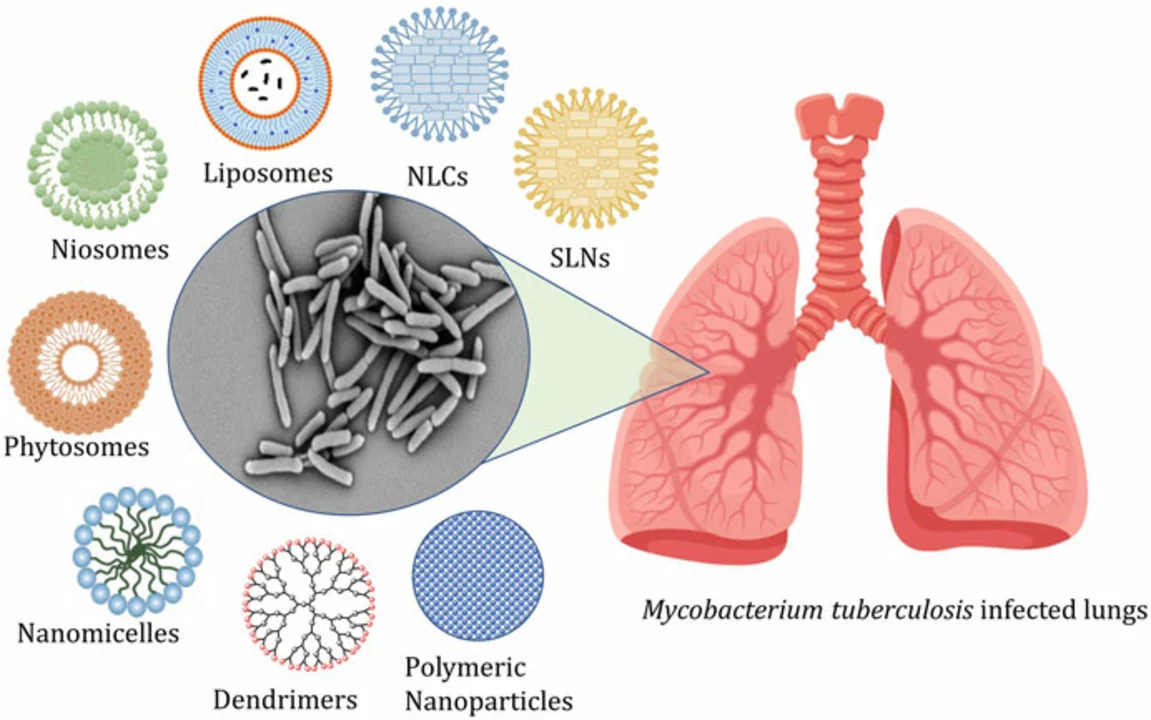Multidrug-resistant tuberculosis (MDR-TB) is TB that doesn't respond to at least isoniazid and rifampicin, the two most powerful first-line drugs. That makes treatment longer, harsher, and more expensive. If you or someone close has a stubborn cough, weight loss, night sweats, or fever that won't go away, ask about drug-resistant TB - early testing changes outcomes.
How does resistance happen? Usually when TB medicines are missed, taken irregularly, or given in the wrong dose or combination. Resistance can also spread directly from one person to another. In crowded places or where treatment programs are weak, MDR-TB spreads faster than many expect.
Doctors use sputum tests, culture, and molecular assays that check for resistance genes. The rapid molecular tests give results in hours to days, so treatment can start sooner. If you suspect MDR-TB, insist on a molecular test or culture-based drug sensitivity testing. Don't wait for symptoms to get worse before asking for these tests.
Treating MDR-TB means different drugs, often for 9 to 24 months. Newer regimens include bedaquiline, linezolid, and pretomanid in certain combinations, which can shorten and simplify therapy for some patients. Side effects are common: nausea, hearing loss, liver changes, or low blood counts. Report side effects early - many can be managed without stopping the whole regimen.
Directly observed therapy (DOT) or closely supported treatment improves success. That means health workers or trained family members help make sure pills are taken at the right time. Financial, social, or mental health support matters - a person is less likely to finish a long course if they can't afford transport or fear stigma.
What about extensively drug-resistant TB (XDR-TB)? XDR-TB resists first-line drugs plus certain key second-line drugs. It's rarer but harder to treat. If tests show XDR patterns, specialists and reference centers should guide therapy. Newer oral drugs have improved outcomes, but early detection remains crucial.
Prevention is simple in idea but needs consistent action: diagnose and treat drug-susceptible TB correctly, complete full courses, use proper infection control in clinics and homes, and vaccinate where recommended. For close contacts of MDR-TB patients, regular screening and tailored preventive therapy may be advised.
If you live or work where TB is common, watch for persistent respiratory symptoms and seek care quickly. If diagnosed, ask about resistance testing, treatment length, likely side effects, and support services. With the right tests, drugs, and support, many people with MDR-TB can be cured. Don't accept delays - push for timely testing and consistent care.
Practical tips: keep a treatment diary, set daily alarms, and ask your clinic for directly observed options or video DOT if travel is hard. Tell close contacts so they can get checked - protecting others helps you too. Eat enough calories and protein, avoid smoking, and limit alcohol while on treatment. Keep all medical records and carry a treatment card if you travel. If you have trouble paying for drugs or transport, many national TB programs and charities offer support - ask your clinic for referrals. Good communication with your care team makes the long course manageable.
Stay informed always.

In my latest blog post, I discussed the crucial role of cycloserine in managing multidrug-resistant tuberculosis (MDR-TB). Cycloserine, an antibiotic, has become increasingly important in the treatment of MDR-TB, especially when other first-line medications are ineffective. This is because it targets the bacteria causing TB in a different way, thus overcoming resistance. However, it's essential to use cycloserine in combination with other antibiotics to ensure maximum effectiveness and minimize the risk of further resistance. Overall, cycloserine plays a vital role in the fight against MDR-TB, and ongoing research is crucial to optimize its use and develop new treatments.
Learn practical steps to prevent skin yeast infections, from hygiene and clothing tips to diet and early detection, plus when to seek medical help.
As a blogger, I recently looked into fluvoxamine interactions and found out that it's crucial to avoid certain medications while taking this SSRI. Some medications, like monoamine oxidase inhibitors (MAOIs) and pimozide, can cause severe side effects when taken with fluvoxamine. It's also essential to be cautious with other antidepressants, blood thinners, and drugs affecting serotonin levels. To ensure safety, always consult with a doctor before starting any new medications while on fluvoxamine. Remember, it's better to be safe than sorry when it comes to drug interactions!
Discover how butenafine works to clear jock itch quickly, why it outperforms other antifungals, and practical tips for safe use.
Learn how the VA formulary works, what generic medications are covered, and how veterans save money on prescriptions with low copays, Meds by Mail, and strict generic-first policies.
State laws determine whether pharmacists must or can switch your brand-name prescription to a cheaper generic. These rules affect your costs, safety, and access-and vary widely across the U.S.